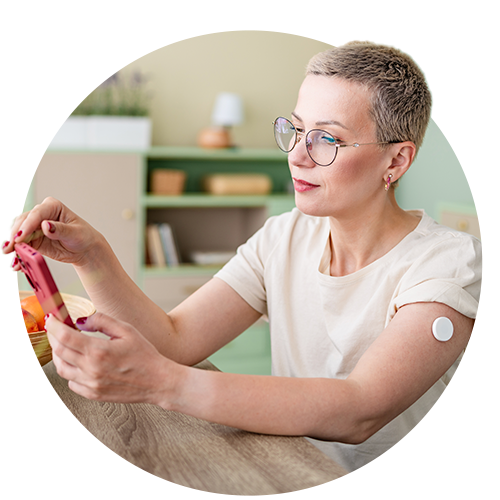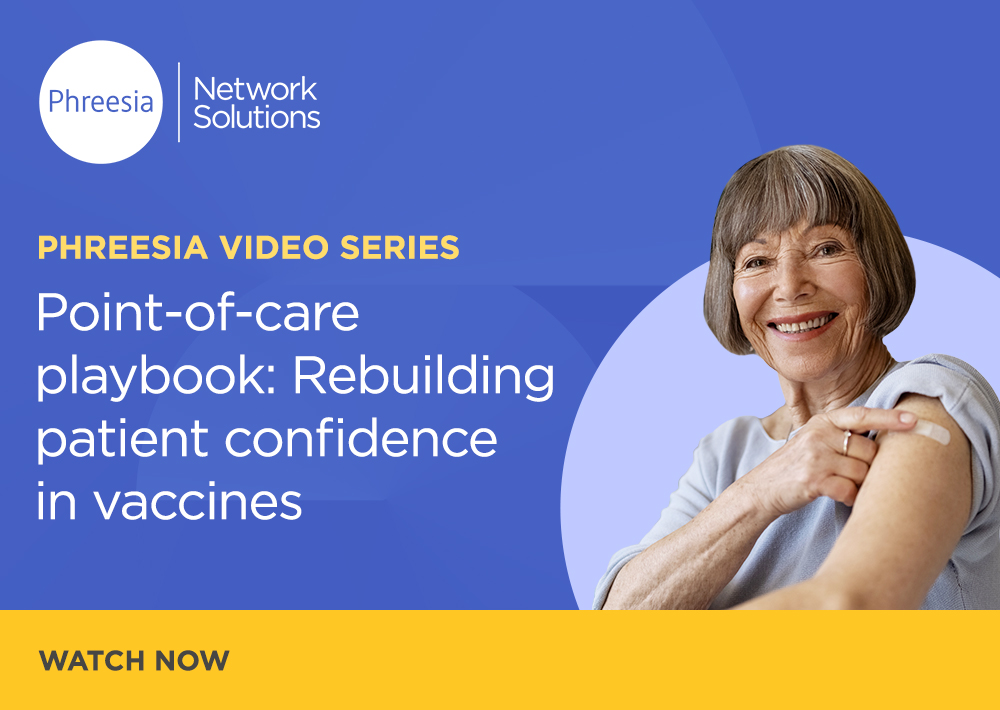
Diabetes drives a cascade of comorbidities across multiple therapeutic areas. When patients consent to use their information, personalized, digital point-of-care education—unlike static materials—empowers patients, fosters provider trust and helps organizations deliver integrated, outcome-driven engagement.
Type 2 diabetes is a chronic condition that does not exist in isolation. In fact, it disrupts nearly every major organ in the body, fueling an expanding cascade of health complications that extend well beyond glucose management. With approximately 38 million Americans living with type 2 diabetes and another 98 million in prediabetic stages, its impact on the healthcare system is profound. Adults with type 2 diabetes have a substantially higher risk of cardiovascular disease, and many cases may be unrecognized until advanced. Up to 50% of adults with diabetes may develop peripheral neuropathy, with prevalence rising with age and duration of disease. Approximately one in three adults with diabetes have chronic kidney disease. Additionally, diabetic retinopathy remains the leading cause of preventable blindness among working-age adults.
These numbers reflect more than clinical complexity. They represent the interconnected nature of chronic conditions. Diabetes accelerates inflammation, damages blood vessels and impairs circulation, all of which heighten the risk of heart attack, stroke, kidney failure, nerve damage and vision loss. For life sciences organizations and patient advocacy groups, this interconnection underscores a strategic imperative: to approach patient engagement holistically and educate patients at the moments that matter most.
The expanding web of comorbidities
Every type 2 diabetes diagnosis creates a chain reaction of potential comorbidities. Patients treated for diabetes also need cardiovascular care, kidney function testing, regular foot exams and vision screening. Roughly 70% of adults with diabetes have high blood pressure, and 30–60% of individuals with diabetes have dyslipidemia. Older adults with diabetes are at a higher risk of cognitive decline, and older adults with uncontrolled diabetes are at an increased risk of Alzheimer’s disease and vascular dementia.
Organizations that recognize this overlap can design engagement strategies that reflect the realities of multiple long-term conditions. Instead of addressing each condition in isolation, effective campaigns weave together messaging that connects the dots between conditions, helping patients see how one health decision affects multiple outcomes. This improves patient understanding, builds credibility and trust, and supports meaningful conversations between patients and providers.
Attention meets action at the point of care
The point of care represents a powerful moment to influence a patient’s awareness and behaviors. It’s where patients are already thinking about their health, open to guidance and poised to make decisions.
Digital point-of-care education goes far beyond what static waiting room wallboards or brochures can offer. Those materials rely on one-size-fits-all messaging that assumes every patient’s journey looks the same. In contrast, personalized digital content reaches patients with evidence-based information that aligns with their unique health profile and risk factors, making it exponentially more relevant and actionable. When patients see educational messaging that reflects their concerns, providers can build on that engagement to spark meaningful conversations during appointments because their patients are better prepared to ask questions and are more likely to be receptive to a treatment plan.
When executed well, point-of-care education can:
- Reveal the connection between chronic conditions (e.g., diabetes and cardiovascular risk)
- Encourage medication adherence and preventive care through timely, actionable content
- Strengthen the provider–patient relationship by supporting informed dialogue
- Position organizations as trusted allies in patient wellbeing
Integrating education across therapeutic areas
Traditional health education often operates in silos, with separate messages for cardiology, nephrology, ophthalmology, hepatology or endocrinology. But this doesn’t reflect reality: patients with diabetes rarely have the luxury of focusing on a single diagnosis. A patient living with diabetes may also be juggling hypertension, obesity and neuropathy simultaneously, navigating multiple care teams and treatment plans.
Forward-thinking organizations are breaking down these silos through integrated, data-driven approaches that align messaging across specialties. By using the digital point of care, organizations can coordinate outreach across therapeutic areas, ensuring that a message about diabetes can also reinforce related kidney health or cardiovascular wellness. This type of coordination mirrors how care is best delivered in the real world: holistic, collaborative and centered on the patient.
But integration alone isn’t enough. To truly resonate with patients juggling multiple conditions, education must go beyond coordination. It must also feel personal. Tailoring outreach to each patient’s unique health journey transforms unified messaging into meaningful information that drives patient action.
Phreesia’s research underscores the importance of personalization: More than 9,200 patients surveyed after check in said they want personalized resources that reflect their health needs. In fact, more than four in five patients said they value receiving new, relevant information about medications or therapies tied to their condition.
Personalized content isn’t just more engaging, but it’s also more effective at influencing behavior. For example, a patient with diabetes receiving a prompt about eye health may be reminded to schedule a retinal screening, while another patient at risk of heart disease learns how improving glucose control supports cardiovascular resilience.
This kind of tailored education does more than increase awareness—it fosters trust. When patients feel seen and understood, they’re more likely to engage meaningfully with their providers, ask informed questions and adhere to treatment recommendations. Life sciences organizations that facilitate these moments of understanding elevate their role from an information source to a trusted partner in patient health.
How Phreesia powers precision engagement
Phreesia enables life sciences organizations and advocacy groups to deliver personalized, relevant education during the digital check-in process, precisely when patients are most focused on their health and ready to act. Through advanced segmentation, real-world data and predictive analytics, Phreesia helps organizations:
- Reach the right patients at scale, across specialties
- Deliver education that reflects real comorbidities
- Reinforce integrated care models that align with provider goals
This approach drives measurable outcomes. By personalizing education and delivering it at the optimal moment, organizations often see improved adherence rates, more proactive patient behavior and stronger engagement metrics across campaigns.
Even beyond diabetes, the principles of point-of-care engagement apply across the healthcare spectrum. Chronic conditions such as obesity, COPD, cardiovascular disease and autoimmune disorders share many of the same challenges: complex comorbidities, fragmented care and inconsistent patient education. Personalized digital engagement bridges these gaps, transforming health information into meaningful patient action.
Organizations that invest in these strategies are better positioned to:
- Expand reach across comorbid conditions and overlapping patient populations
- Align with provider communication to enhance trust and credibility
- Support long-term adherence, prevention and improved outcomes
With chronic conditions with multiple comorbidities, the organizations that lead will be those that connect the dots, embracing digital precision over static messaging, integration over isolation, and empathy over exposure. Those who do will not only drive better outcomes but also redefine what patient trust and engagement look like.
Ready to elevate your patient engagement strategy? Partner with Phreesia to deliver personalized, relevant education that reaches patients when it matters most—at the point of care. Request a demo today and see how precision engagement drives better outcomes for chronic conditions.

